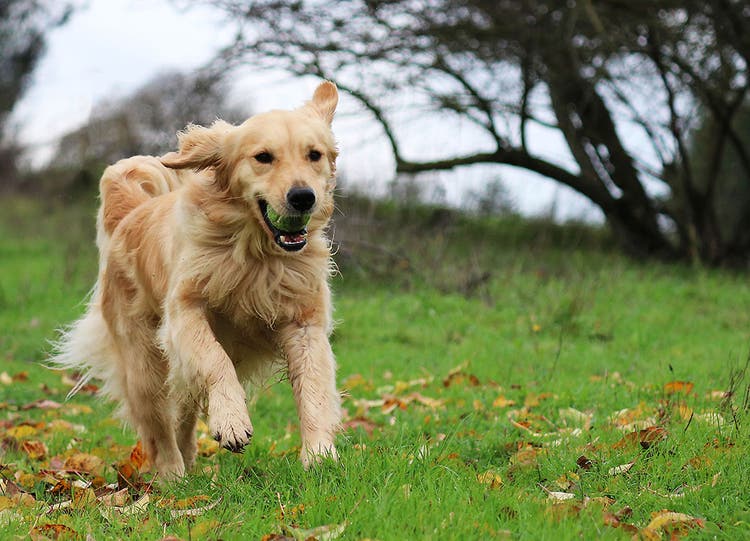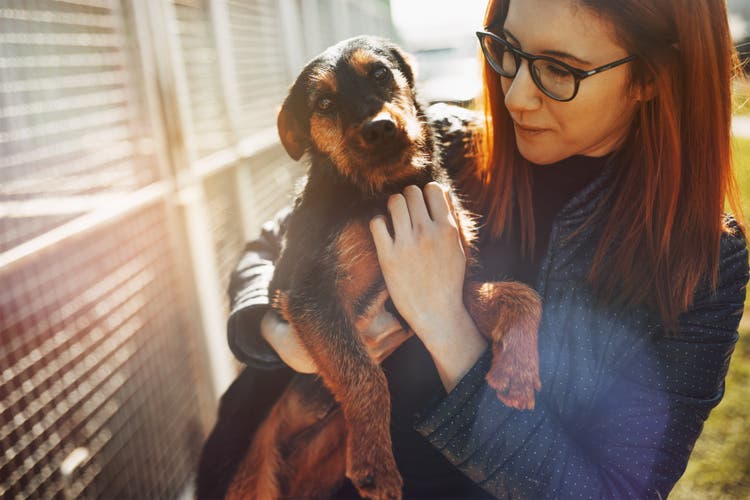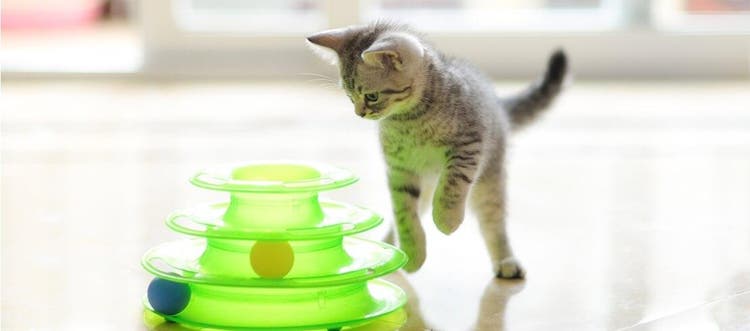Some dogs can become nervous and anxious when separated from their owners. Learn how to recognize the signs of separation anxiety in dogs – and how to help relieve their stress. Separation anxiety can be quite severe and should be discussed with a veterinarian.
Most dogs are comfortable on their own, but some become distressed in their owner's absence, a condition known as separation anxiety.
Signs of dog separation anxiety
Signs of separation anxiety in dogs when they are alone range from the obvious to the less apparent. Some of these include:
- Having accidents indoors
- Destructive behaviour: chewing on furniture or frantic scratching on doors or walls
- Self-harm: pulling out fur, scratching skin
- Drooling or excessive panting
- Barking for prolonged periods of time
- Howling
- Whimpering
- Pacing
If you suspect your dog has separation anxiety, ask your neighbours if they hear barking or other signs of distress coming from your dog. It’s best to be proactive and get ahead of the problem before you receive any formal complaints. Reassure your neighbours that you are taking steps to alleviate your dog’s anxiety.
Signs of your dog suffering from separation anxiety can even be evident when you are at home. Your dog may follow you around from room to room, seek lots of physical contact and attention, and become quiet, withdrawn or visibly distressed as you prepare to leave.
Separation anxiety can be quite severe in some animals. If you suspect that your pet suffers from separation anxiety this should be discussed with your veterinarian as soon as possible. Some pets will need medication despite training to help them manage their anxiety.
How to help your dog cope with separation anxiety
If your dog displays signs of separation anxiety, you need to deal with the problem before it becomes chronic. These strategies will help ease your dog’s fears.
Strategy 1: Help minimize your dog’s stress when you leave the house
All dogs study their owner’s movements, they have memorized every step you take when you leave your home. For example: getting up from your chair, picking up your keys, putting on your coat, putting on your shoes, heading to the door, opening it, and so on. All of these steps are sources of anxiety for a dog with separation anxiety. You will need a lot of patience and a lot of practice when training a dog with separation anxiety.
The key is getting your dog used to you doing these actions without leaving the house, allowing your dog to be completely calm before moving onto the next action. Put your shoes on, then immediately take off your shoes, without ever leaving the house or pick up your keys and carry them with you around the house again without leaving. Your dog may gradually build up a tolerance to you doing these actions without triggering their anxiety.
This problem has likely taken months if not years to develop. It will take a while for your dog’s brain to stop associating the steps of your departure with fear and begin re-associating those steps with a calmer state-of-mind. So don’t rush it. With patience and lots and lots of repetitions it will work!
Strategy 2: Foster your dog’s independence
If your dog becomes anxious when you prepare to leave home, you will need to encourage your dog to be more independent. Here are some tips:
- Discourage your dog from following you around constantly. Try to enter another room and close or partially close the door. Wait until your dog calms down before returning to the first room. Repeat.
- Demonstrate you’re focused on other tasks, and don’t react or engage when your dog brings toys or attempts to gain your attention
- Associate leaving with something great: a chew toy you only pull out when you leave or a treat ball that dispenses food or treats when dogs roll it
IMPORTANT: never make a fuss about your departures and returns. Do not celebrate or reward frantic jumping, circling and barking upon your return. Instead, ignore your dog’s excitement and remain calm and low-key when leaving and returning to your home. You can acknowledge and pet your dog once they have calmed down. Dogs are sensitive to your energy and actions. When you are calm it will encourage your dog to be the same.
Strategy 3: Use a crate
Crate training can also be useful for helping with separation anxiety. Dogs are den animals by nature, so teaching them that their crate is a safe place to retreat to when alone can help keep them calm – and prevent them from destroying your house! Be aware that this is not true for all dogs. Some dogs will have more anxiety from being in a crate. Look around for clues like excessive drool in the cage or signs that they have destroyed their bedding.
The key to crate training is to always make the crate a positive experience. Your dog should eventually come to think of their crate as their own little safe haven. Furnish the crate with beloved toys and cozy bedding. You could even put an old piece of your clothing in the crate, so your dog has your comforting smell nearby.
Note: If you are concerned that your dog may destroy or eat toys or bedding when you’re gone, do not leave items in their crate.
Leave the crate door open the first few times so your dog doesn’t become anxious. You want your dog to associate the crate with positive feelings. Of course, there’s nothing most dogs find more positive than food, so give them treats inside their crate whenever they lie inside quietly. You can even give them their dinner inside their crate.
Slowly build up time with the door closed (again, using treats as positive reinforcement) until your dog is happy spending time there.
Make sure you encourage your dog to use the crate when you are in the house, too – it should not only be associated with alone time. When your dog is alone in the house, leave the door of the crate open so they can wander inside as they please.
Set them up for success: Ensure your dog gets lots of exercise and has done their business before you leave the house. A tired dog is a good dog!
Keep in mind that a dog that makes excessive noise when you’re leaving is not being “bad” or trying to manipulate you – they are genuinely upset and distraught. Any form of punishment will only reinforce the problem. If, when you return home, you see your dog has had an accident inside or caused damage, don’t punish them or this will worsen their anxiety.
You’ll need plenty of patience to help ease separation anxiety. You should speak with your veterinarian and you may need to seek help from a qualified animal behaviourist if you suspect your dog has separation anxiety. These experts can assess your dog’s personality, breed traits and lifestyle, and also assess your behaviour with your dog to come up with a customized plan. More severe cases of separation anxiety may require a combination of medication and behaviour modification.









